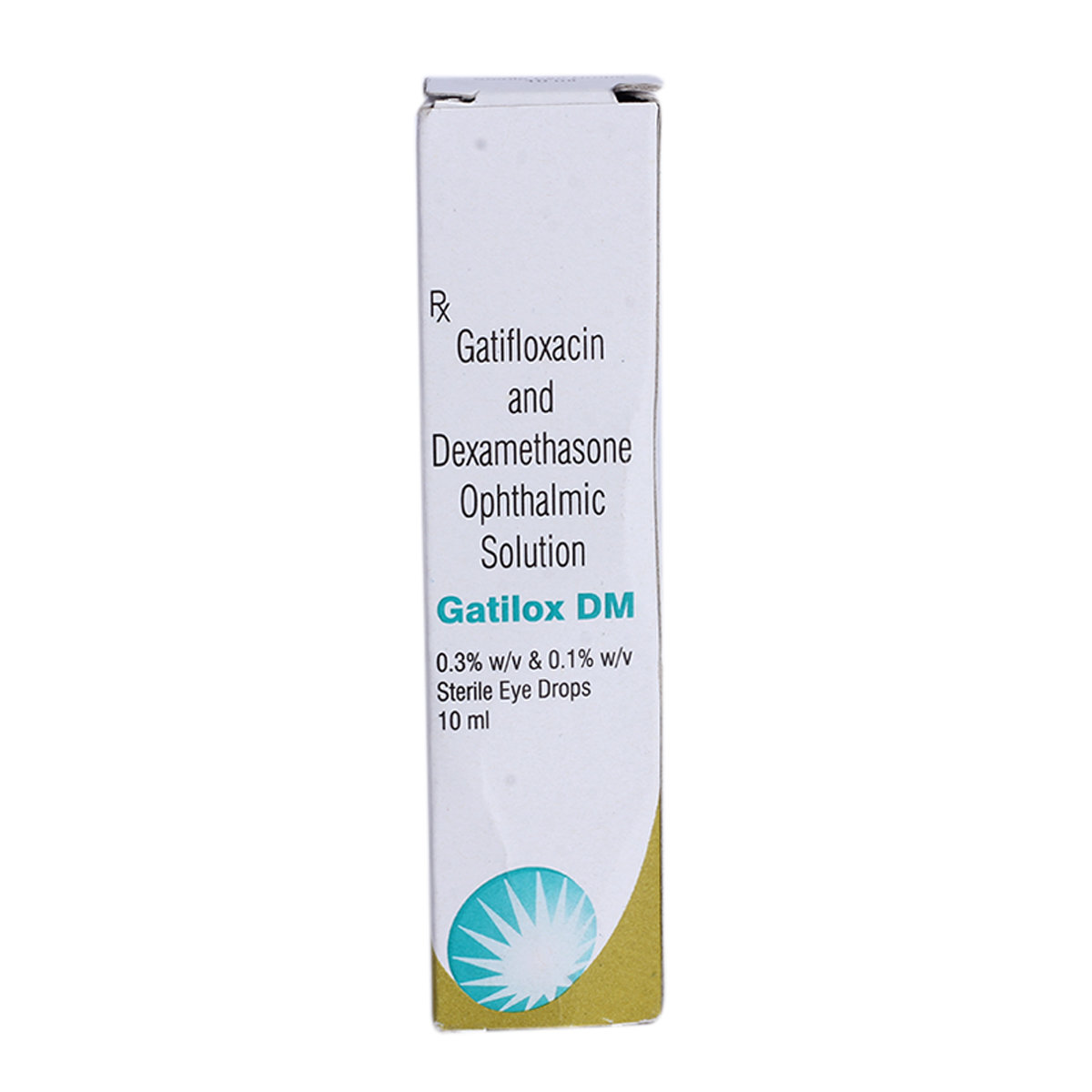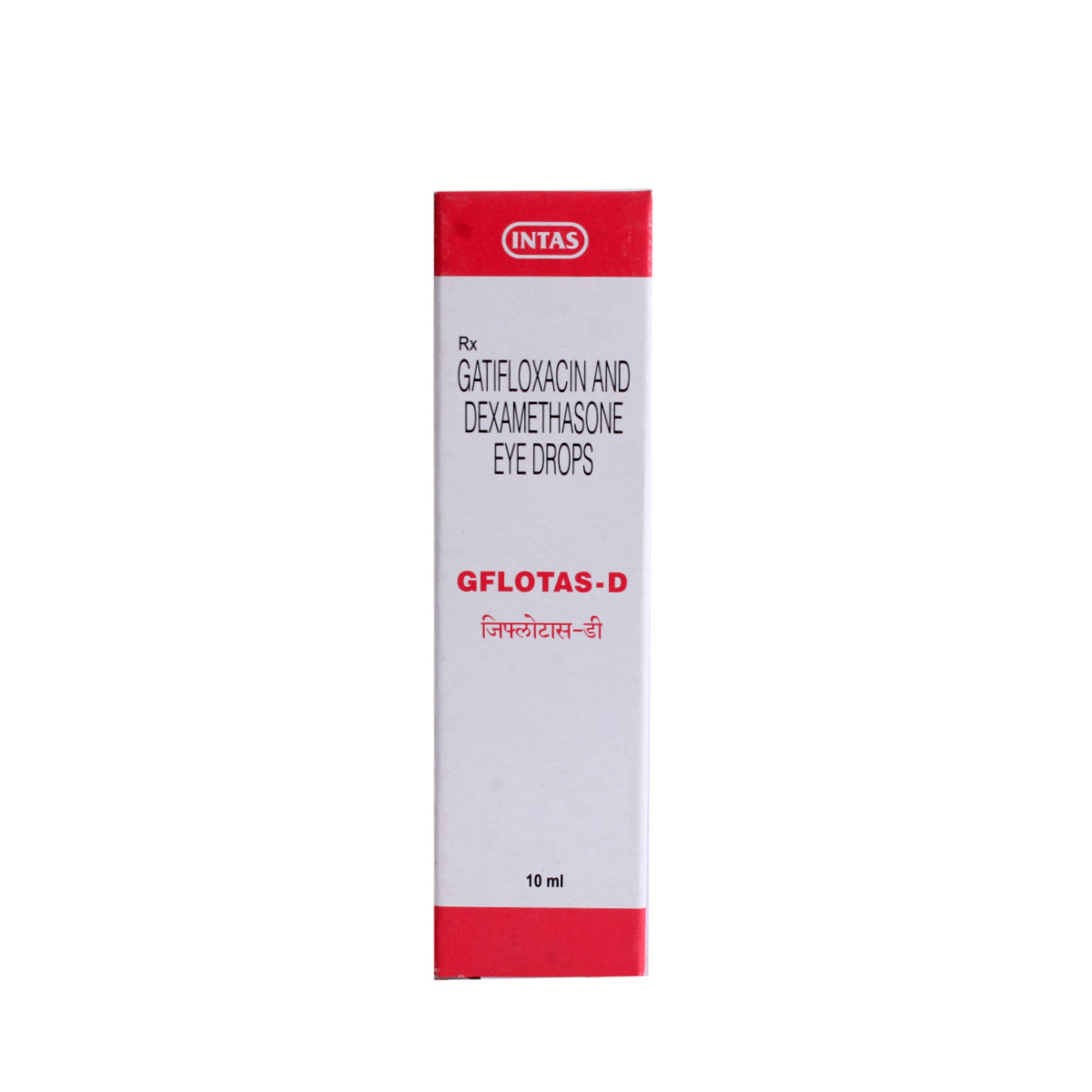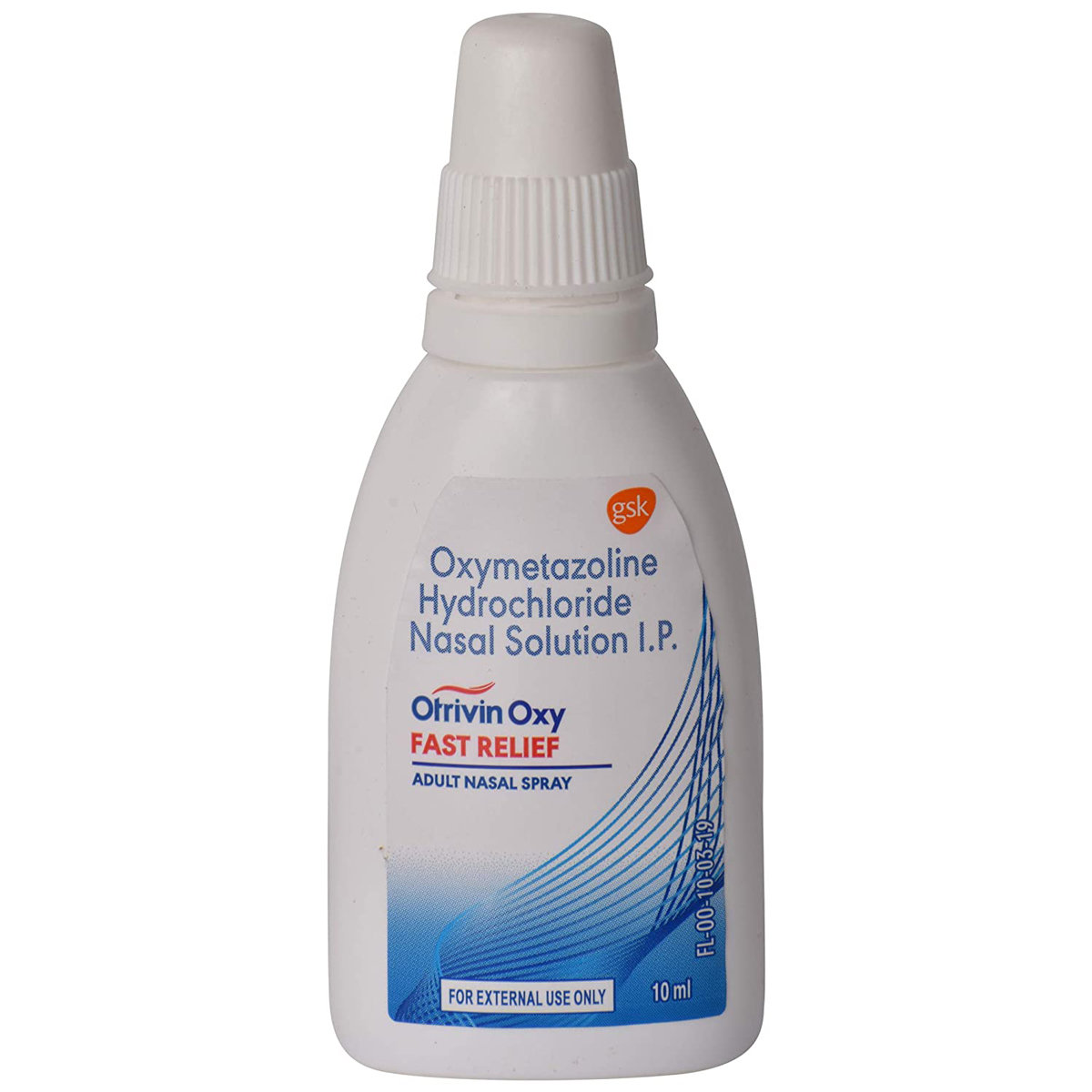Gatilox DM Eye Drops 5 ml
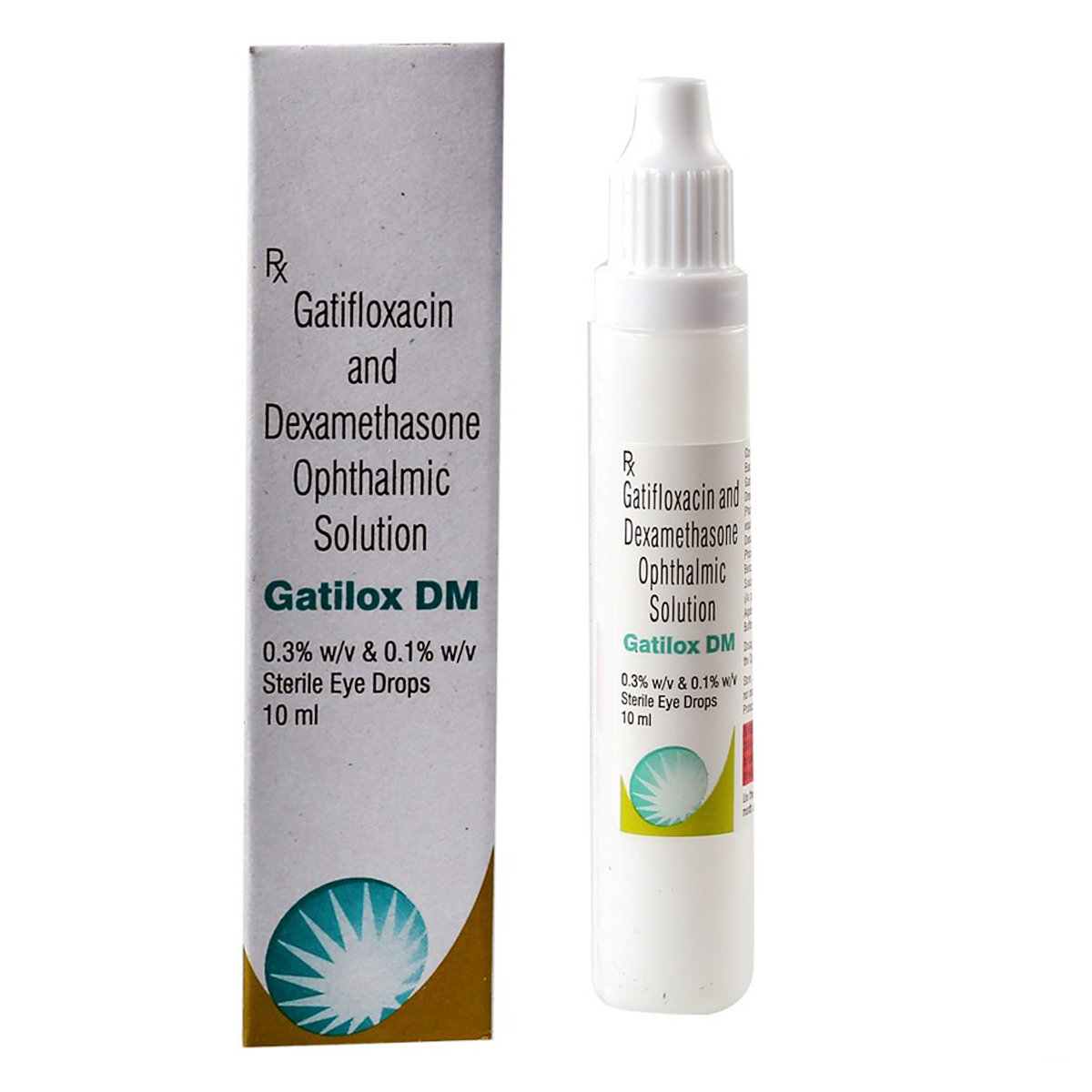
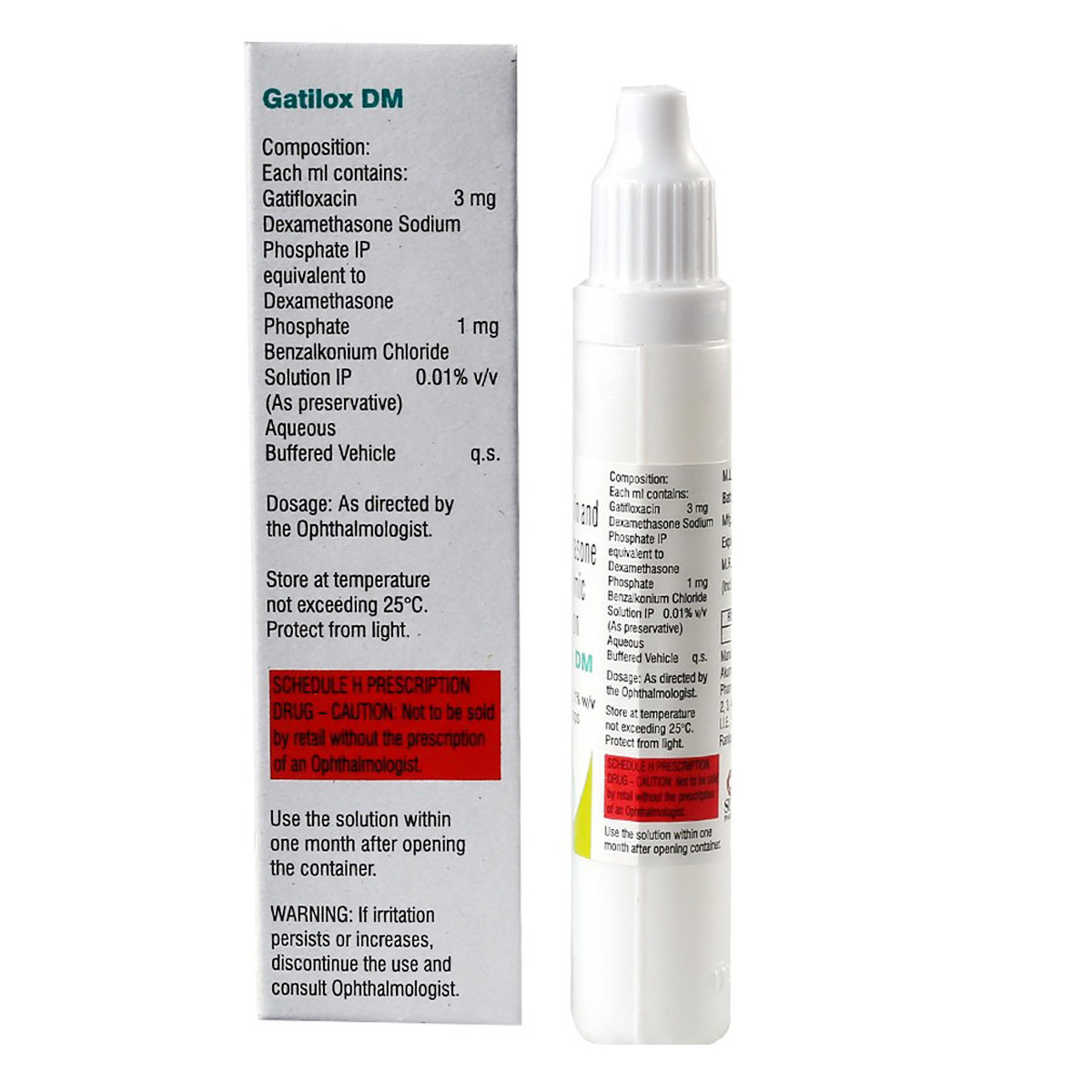
MRP ₹29.5
(Inclusive of all Taxes)
₹4.4 Cashback (15%)
know your delivery time
Provide Delivery Location
Composition :
Manufacturer/Marketer :
Consume Type :
Expires on or after :
Return Policy :
Selected Pack Size:5 ml
5 ml ₹26.6
(₹5.32 per ml)
In Stock
10 ml ₹26.6
(₹2.66 per ml)
In Stock

Secure Payment

Trusted by 8 Crore Indians

Genuine Products
Therapeutic Class
Country of origin
Manufacturer/Marketer address
Disclaimer
Alcohol
Safe if prescribed
There is limited information on how alcohol consumption affects Gatilox DM Eye Drops 5 ml. Please consult your doctor before starting.
Pregnancy
Consult your doctor
Please consult your doctor before using Gatilox DM Eye Drops 5 ml if you are pregnant or planning to conceive.
Breast Feeding
Consult your doctor
There is limited information on how Gatilox DM Eye Drops 5 ml affects breastfeeding. Please consult your doctor before taking Gatilox DM Eye Drops 5 ml if you are a breastfeeding mother.
Driving
Safe if prescribed
Gatilox DM Eye Drops 5 ml may cause side effects like blurry vision, affecting your driving ability. Do not drive or operate machinery in such cases. Drive only when you are alert and have clear vision.
Liver
Consult your doctor
Gatilox DM Eye Drops 5 ml can be used for treating eye infections in patients with liver diseases.
Kidney
Consult your doctor
Gatilox DM Eye Drops 5 ml can be used for treating eye infections in patients with kidney diseases.
Children
Safe if prescribed
Gatilox DM Eye Drops 5 ml should be used with caution in children. It is not recommended for use in newborns.
Product Substitutes
About Gatilox DM Eye Drops 5 ml
Gatilox DM Eye Drops 5 ml belongs to a group of medications called ‘Antibiotics and Corticosteroids’ used in the treatment of bacterial eye infections or eye discomfort, especially in patients who have undergone eye surgeries. It also decreases the risk of eye infections such as conjunctivitis (inflammation of the conjunctiva) and other inflammatory conditions of the eye (cornea, iris, and connective tissue) in postoperative patients.
Gatilox DM Eye Drops 5 ml is a combination of two medicines: Gatifloxacin and Dexamethasone. Gatifloxacin is an antibiotic that acts by interfering with the formation of essential proteins required for bacterial growth. Dexamethasone is a steroid that reduces inflammation and symptoms associated with infection such as redness and irritation. It works by inhibiting the chemicals such as prostaglandins that cause inflammation.
You should take this medicine as prescribed by your doctor. The common side-effects of Gatilox DM Eye Drops 5 ml are red eyes, eye pain, dry eye, watery eyes, and change in taste. Eye drops may also cause temporary blurred vision. In addition, it may cause inflammation of the cornea (clear outer layer of the eye), which is a serious side-effect and may cause vision problems. If any of these side-effects persist, consult your doctor immediately.
Do not take Gatilox DM Eye Drops 5 ml if you are allergic to Gatifloxacin, Dexamethasone, other fluoroquinolone antibiotics, or any contents of it. Before taking Gatilox DM Eye Drops 5 ml, inform your doctor if you are diagnosed with any fungal infections, viral infections such as herpes simplex or varicella, or parasitic infections such as amoebiasis. Do not use Gatilox DM Eye Drops 5 ml if you have tuberculosis, damaged cornea, ulceration, open lesions with incomplete formation of the covering tissue, and increased pressure inside the eye.
Uses of Gatilox DM Eye Drops 5 ml
Medicinal Benefits Mweb
Key Benefits
Gatilox DM Eye Drops 5 ml is a combination of two medicines: Gatifloxacin and Dexamethasone. Gatifloxacin is a fluoroquinolone and broad-spectrum antibiotic. It can act against both gram-positive and gram-negative bacteria. It acts by interfering with the formation of essential proteins required for bacterial growth. Dexamethasone is a corticosteroid that has anti-inflammatory properties and acts by inhibiting the chemicals such as prostaglandins that cause inflammation. It also reduces symptoms associated with infection such as redness and irritation of the eye and also decreases the risk of infections.
Directions for Use
Side Effects of Gatilox DM Eye Drops 5 ml
- Red eyes
- Eye pain
- Blurred vision
- Dry eye
- Excessive watery eyes
- Change in taste
- Inflammation of the cornea of the eye (severe)
Drug Warnings
Before taking Gatilox DM Eye Drops 5 ml, inform your doctor if you have vision problems, severe pain in the eye, glaucoma (raised pressure in the eye), eye injury, or have undergone eye surgery or using any other eye drops or eye ointment. Inform your doctor immediately if you notice swelling or weight gain around the trunk or in the face, as it may be a sign of Cushing’s syndrome (high levels of cortisol in the body). Do not use eye drops for longer than recommended by your doctor as it may suppress adrenal gland function and may increase the risk of cataracts (clouding of the eye) and also increases the risk of a second infection.
Drug-Drug Interactions
Drug-Drug Interactions
Login/Sign Up
Co-administration of Desmopressin with Gatilox DM Eye Drops 5 ml may increase the risk of hyponatremia (low levels of salt in the blood).
How to manage the interaction:
Co-administration of Gatilox DM Eye Drops 5 ml and Desmopressin can lead to an interaction, it can be taken if advised by a doctor. However, if you experience any symptoms like confusion, hallucination, seizure, changes in blood pressure, increased heart rate, fever, excessive sweating, shivering or shaking, blurred vision, muscle stiffness, tremors, stomach cramps, nausea, vomiting, and diarrhea, consult a doctor immediately. Do not stop using any medications without a doctor's advice.
When Gatilox DM Eye Drops 5 ml is taken with Ranolazine, may significantly reduce the blood levels of Ranolazine.
How to manage the interaction:
Co-administration of Ranolazine and Gatilox DM Eye Drops 5 ml can lead to an interaction, it can be taken if advised by a doctor. Do not stop using any medications without a doctor's advice.
When Regorafenib is taken with Gatilox DM Eye Drops 5 ml, may significantly reduce the blood levels of Regorafenib.
How to manage the interaction:
Co-administration of Regorafenib and Gatilox DM Eye Drops 5 ml can lead to an interaction, it can be taken if advised by a doctor. Do not stop using any medications without a doctor's advice.
When Rilpivirine is taken with Gatilox DM Eye Drops 5 ml, may significantly reduce the blood levels of Rilpivirine.
How to manage the interaction:
Co-administration of Rilpivirine and Gatilox DM Eye Drops 5 ml can lead to an interaction, it can be taken if advised by a doctor. Do not stop using any medications without a doctor's advice.
Coadministration of Gatilox DM Eye Drops 5 ml with Rosiglitazone may sometimes affect blood glucose levels. Both low blood glucose and, less frequently, high blood glucose have been reported.
How to manage the interaction:
Although there is a possible interaction, Rosiglitazone can be taken with Gatilox DM Eye Drops 5 ml if prescribed by the doctor. Consult the prescriber if you experience symptoms such as nervousness, confusion, headache, dizziness, drowsiness, tremor, nausea, hunger, weakness, perspiration, palpitation, rapid heartbeat, increased urination, increased thirst, and increased hunger. Maintaining blood glucose levels is advised.
Taking Gatilox DM Eye Drops 5 ml and Disopyramide can increase the risk of irregular heart rhythms.
How to manage the interaction:
Taking Gatilox DM Eye Drops 5 ml and Disopyramide together is not recommended as it can possibly result in an interaction, it can be taken if your doctor has advised it. However, if you experience sudden dizziness, lightheadedness, fainting, shortness of breath, chest pain or tightness, rapid heartbeat, or memory loss, contact your doctor immediately. Do not discontinue any medications without consulting a doctor.
Co-administration of Dapagliflozin with Gatilox DM Eye Drops 5 ml may sometimes affect blood glucose levels. Both low blood glucose and, less frequently, high blood glucose have been reported.
How to manage the interaction:
Although there is a possible interaction, Gatilox DM Eye Drops 5 ml can be taken with Dapagliflozin if prescribed by the doctor. Consult the prescriber if you experience symptoms such as nervousness, confusion, headache, dizziness, drowsiness, tremor, nausea, hunger, weakness, perspiration, palpitation, rapid heartbeat, increased urination, increased thirst, and increased hunger. Maintaining blood glucose levels is advised. Do not discontinue the medication without consulting a doctor.
Taking Gatilox DM Eye Drops 5 ml with Bepridil can increase the risk or severity of irregular heart rhythms. The risk increases in patients with a history of heart illness or electrolyte imbalance.
How to manage the interaction:
Taking Gatilox DM Eye Drops 5 ml with Bepridil together can possibly result in an interaction, it can be taken if your doctor has advised it. However, if you experience sudden dizziness, lightheadedness, fainting, shortness of breath, chest pain or tightness, rapid heartbeat, or memory loss, contact a doctor immediately. Do not discontinue any medications without consulting a doctor.
Coadministration of Repaglinide with Gatilox DM Eye Drops 5 ml may sometimes affect blood glucose levels. Both low blood glucose and, less frequently, high blood glucose have been reported.
How to manage the interaction:
Although there is a possible interaction, Repaglinide can be taken with Gatilox DM Eye Drops 5 ml if prescribed by the doctor. However, consult the doctor if you experience unusual symptoms. Do not stop using any medications without first talking to your doctor.
Taking Gatilox DM Eye Drops 5 ml with Ziprasidone can increase the risk of irregular heart rhythm.
How to manage the interaction:
Taking Gatilox DM Eye Drops 5 ml with Ziprasidone together can possibly result in an interaction, but it can be taken together if prescribed by a doctor. However, consult your doctor if you experience sudden dizziness, lightheadedness, fainting, shortness of breath. Do not discontinue any medications without consulting a doctor.
Drug-Food Interactions
Drug-Food Interactions
Login/Sign Up
Drug-Diseases Interactions
Drug-Diseases Interactions
Login/Sign Up
Drug-Drug Interactions Checker List
- CIPROFLOXACIN
- ENOXACIN
- LEVOFLOXACIN
- MOXIFLOXACIN
- RITONAVIR
- COBICISTAT
Habit Forming
Special Advise
It is advised to contact your doctor if the infection symptoms persist or worsen after two weeks of treatment.
Diet & Lifestyle Advise
- Sleep for at least six to eight hours to rejuvenate your eyes in a natural way.
- Wash your eyes with clean water at least two to three times a day
- Manage stress, eat healthily, drink plenty of water, exercise regularly, and get plenty of sleep.
- Avoid alcoholic beverages as it can make you dehydrated and affect your sleep. This effect can also affect your body’s ability in fighting off infections.
- Reduce screen time (by avoiding watching tv, or phone) and use sunglasses while going out into the sunlight.
All Substitutes & Brand Comparisons
RX
Gatilox DM Eye Drops 10 ml
Sun Pharmaceutical Industries Ltd
₹29.5
(₹2.66/ 1ml)
50% CHEAPERRX
Gflotas D Eye Drops 10 ml
Intas Pharmaceuticals Ltd
₹31
(₹2.79/ 1ml)
47% CHEAPER

Have a query?
Buy best Ocular products by
Entod Pharmaceuticals Ltd
Ajanta Pharma Ltd
Sunways (India) Pvt Ltd
Sun Pharmaceutical Industries Ltd
Cipla Ltd
Micro Labs Ltd
Allergan Healthcare India Pvt Ltd
Intas Pharmaceuticals Ltd
Raymed Pharmaceuticals Ltd
Nri Vision Care India Ltd
FDC Ltd
Jawa Pharmaceuticals India Pvt Ltd
Indoco Remedies Ltd
Sapient Laboratories Pvt Ltd
Senses Pharmaceuticals Pvt Ltd
Centaur Pharmaceuticals Pvt Ltd
Neomedix Healthcare India Pvt Ltd
Aromed Pharmaceuticals
Optho Remedies Pvt Ltd
Aurolab
Austrak Pvt Ltd
Lupin Ltd
Mankind Pharma Pvt Ltd
Zivira Labs Pvt Ltd
Optho Pharma Pvt Ltd
Synovia Life Sciences Pvt Ltd
Akumentis Healthcare Ltd
Eyekare
His Eyeness Ophthalmics Pvt Ltd
Protech Remedies Pvt Ltd
Runyon Pharmaceutical Pvt Ltd
Alcon Laboratories Inc
Syntho Pharmaceuticals Pvt Ltd
Alembic Pharmaceuticals Ltd
Bell Pharma Pvt Ltd
Klar Sehen Pvt Ltd
Sentiss Pharma Pvt Ltd
Irx Pharmaceuticals Pvt Ltd
Optho Life Sciences Pvt Ltd
Phoenix Remedies Pvt Ltd
Alkem Laboratories Ltd
Doctor Wonder Pvt Ltd
Hicare Pharma
Ipca Laboratories Ltd
Neon Laboratories Ltd
Okulus Drugs India
Pharmtak Ophthalmics (I) Pvt Ltd
Berry & Herbs Pharma Pvt Ltd
Glow Vision Pharmaceuticals
Kaizen Drugs Pvt Ltd
Choroid Laboratories Pvt Ltd
Indiana Opthalamics Pvt Ltd
Optica Pharmaceutical Pvt Ltd
Pharmatak Opthalmics India Pvt Ltd
Samarth Life Sciences Pvt Ltd
Vibgyor Vision Care
Mofon Drugs
Novartis India Ltd
Pharmia Biogenesis Pvt Ltd
Zydus Cadila
Appasamy Ocular Devices Pvt Ltd
Leeford Healthcare Ltd
Medivision Pharma Pvt Ltd
Orbit Life Science Pvt Ltd
X-Med Royal Pharma Pvt Ltd
Zee Laboratories Ltd
Aarma Laboratories
Guerison MS Inc
Laborate Pharmaceuticals India Ltd
Xtas Pharmaceuticals
Accurex Biomedical Pvt Ltd
Blucrab Pharma Pvt Ltd
Does Health Systems Pvt Ltd
Flagship Biotech International Pvt Ltd
Lavue Pharmaceuticals Pvt Ltd
Nutrilis Healthcare Pvt Ltd
Ursa Pharm India Pvt Ltd
Vee Remedies
Vyonics Health Care India Pvt Ltd
Warren Pharmaceuticals Pvt Ltd
Abbott India Ltd
Accvus Pharmaceuticals
Akums Drugs & Pharmaceuticals Ltd
Cadila Healthcare Ltd
Carevision Pharmaceuticals Pvt Ltd
Dey's Medical Stores (Mfg) Ltd
East West Pharma India Pvt Ltd
Eyedea Pharmaceuticals Pvt Ltd
Nimbus Healthcare Pvt Ltd
Ocuris Pharmaceuticals Pvt Ltd
Sherings Pharmaceuticals
Tarks Pharmaceuticals Pvt Ltd
Vcan Biotech
Vision Medilink
Aice Health Care Pvt Ltd
Appasamy Pharmaceuticals Pvt Ltd
Asperia Lifescience Pvt Ltd
Beatum Healthcare Pvt Ltd
East India Pharmaceutical Works Ltd
Grevis Pharmaceutical Pvt Ltd
Customers Also Bought

